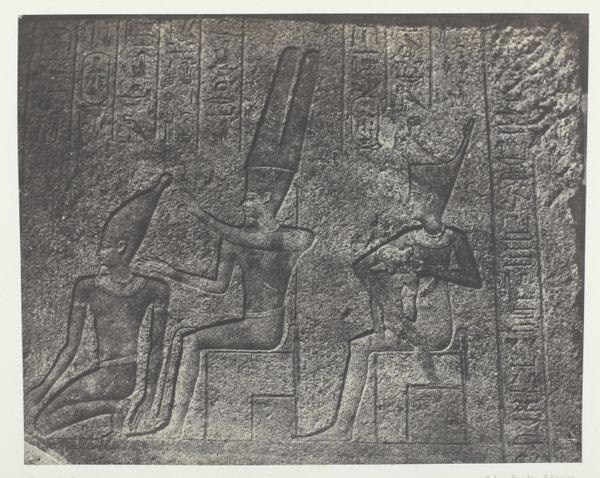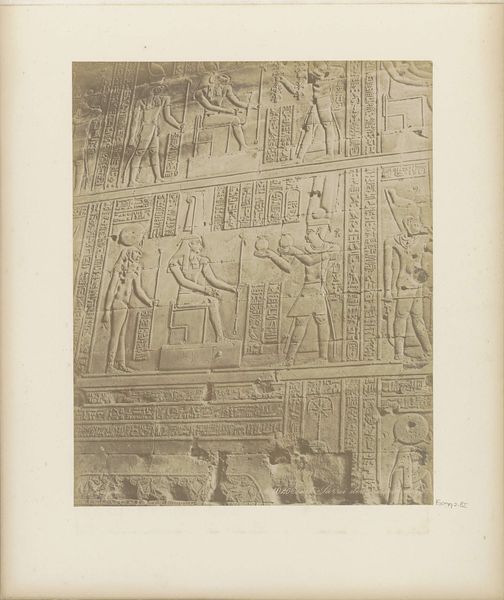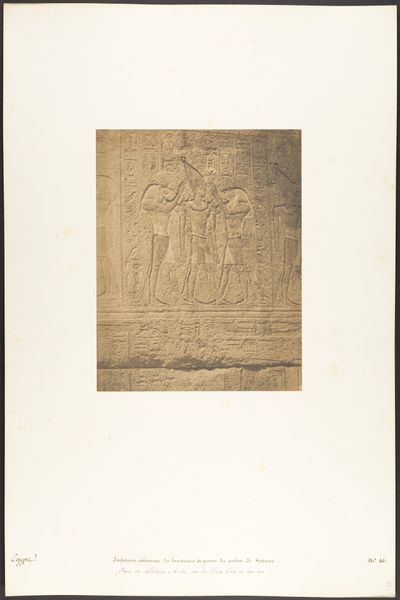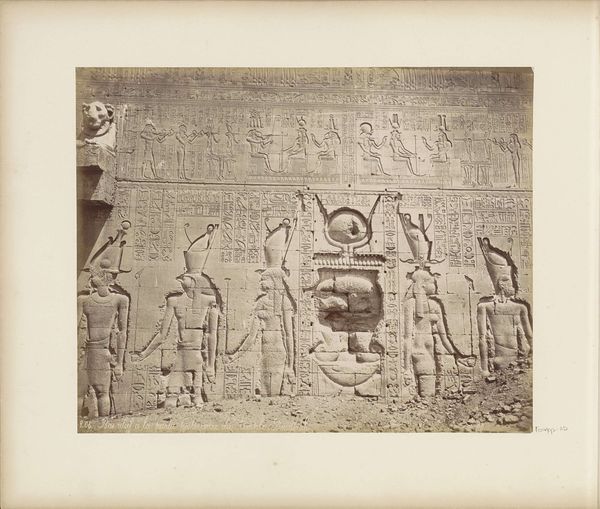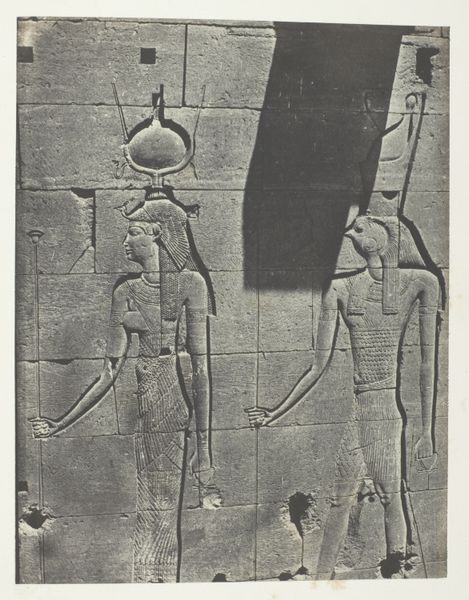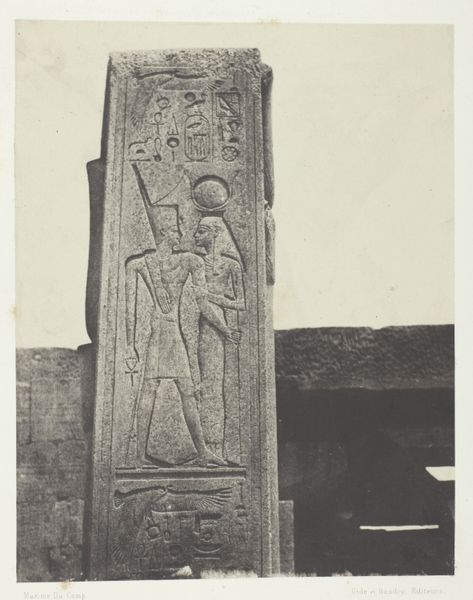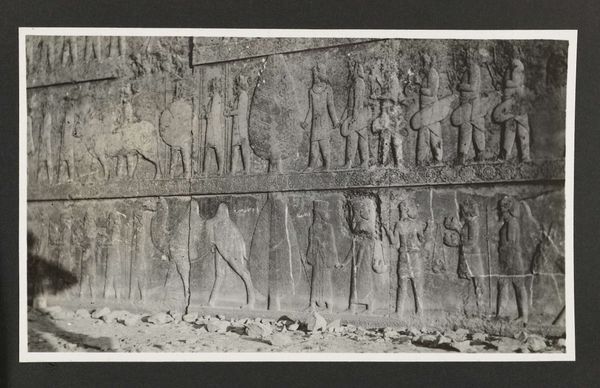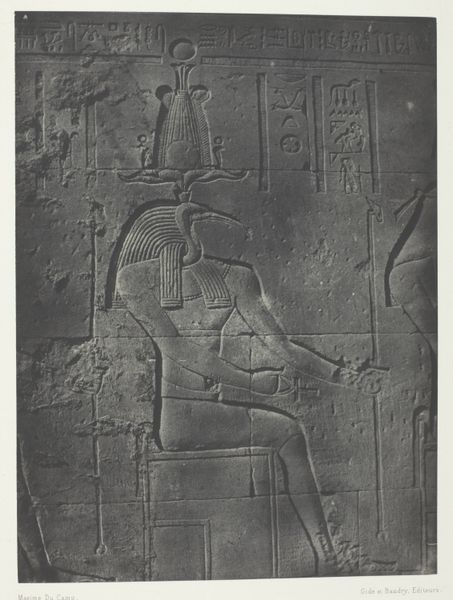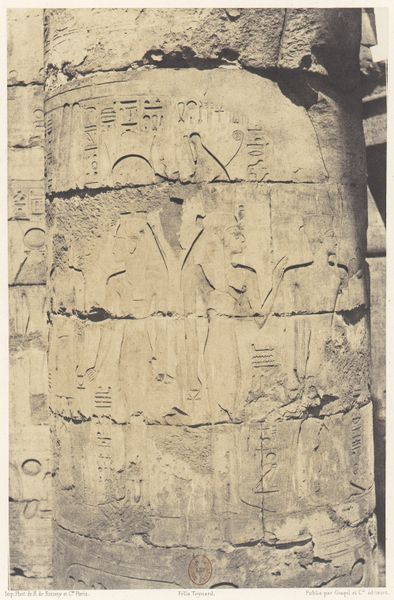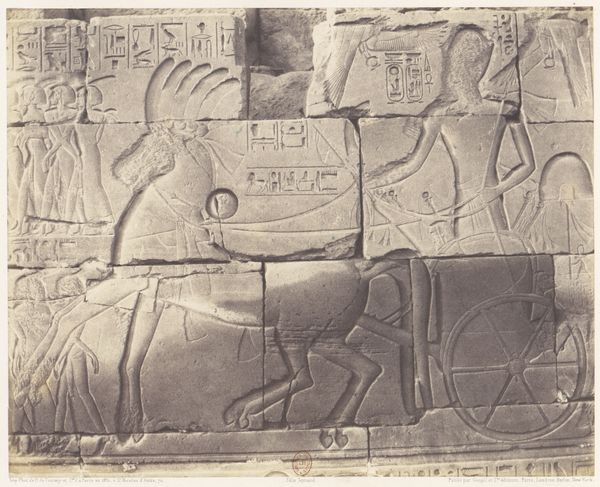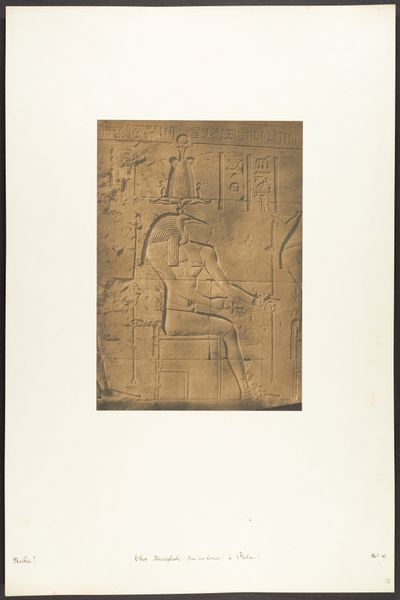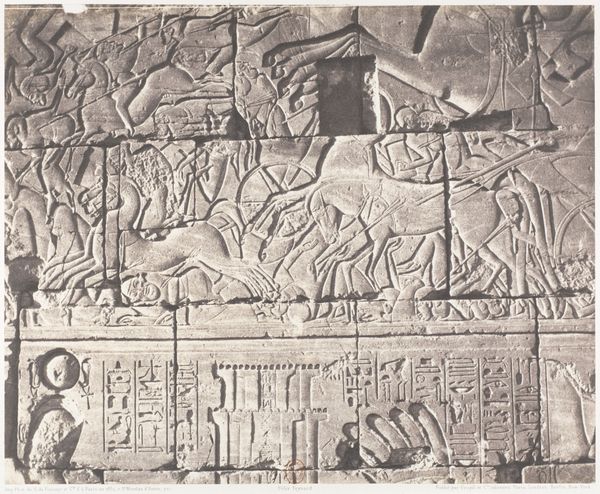
Palais de Karnak, Sculptures Extérieures du Sanctuaire de Granit; Thèbes Possibly 1849 - 1852
0:00
0:00
print, relief, paper, photography
# print
#
relief
#
ancient-egyptian-art
#
paper
#
photography
#
egypt
#
ancient-mediterranean
#
history-painting
Dimensions: 20.4 × 16 cm (image/paper); 43.1 × 29.7 cm (album page)
Copyright: Public Domain
Maxime Du Camp made this photograph of the Palais de Karnak in the mid-19th century, using the calotype process. It was an early form of photography using paper negatives. The process itself involved coating paper with silver iodide, exposing it to light in a camera, and then developing the latent image. The resulting print has a soft, slightly grainy texture, distinct from later photographic methods. Du Camp captured the monumentality of the ancient Egyptian carvings through a relatively new medium. Consider that photography in this period required a deep knowledge of chemistry and optics, combining artistic vision with technical skill. This image exists at the intersection of art, science, and documentation. It's easy to overlook the amount of labor involved, from the photographer to the workers who developed the print, and to the ancient sculptors who carved the original relief. Paying attention to the means of production allows us to appreciate the social and historical context in which the artwork was created.
Comments
No comments
Be the first to comment and join the conversation on the ultimate creative platform.
